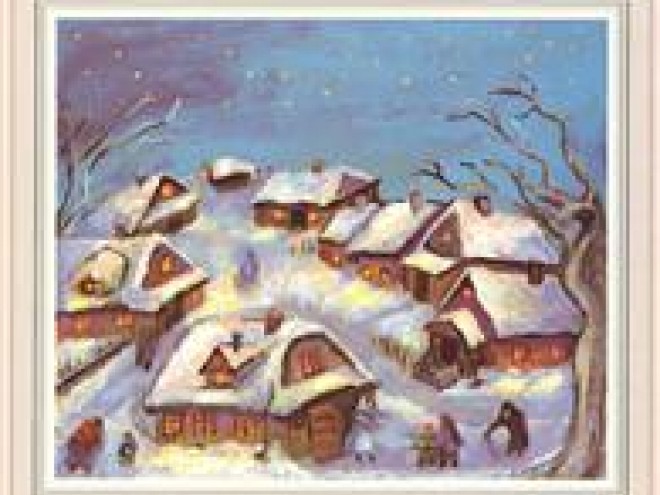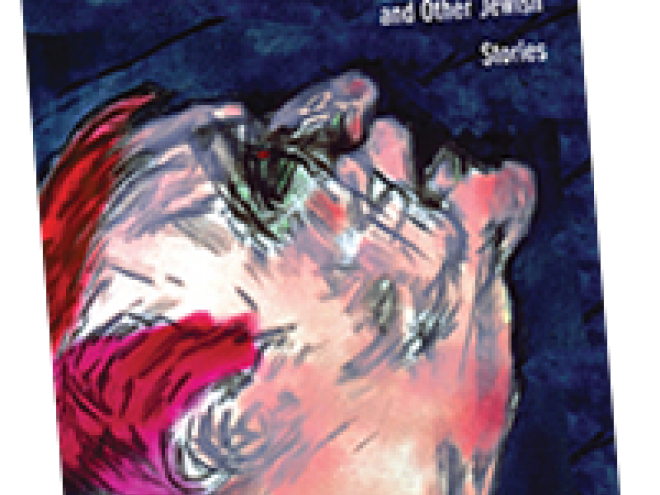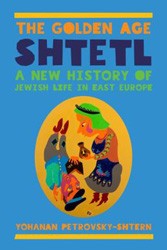The fall of the powerful House of Mashber provides a microscopic view of late 19th century shtetl life even as it is vanishing. In this novel, juxtaposed modern and archaic descriptions of the everyday suggest a medieval theme, but the spiritual and religious life call to mind South American magical realism.
With stinging insight that is as relevant today as in the period described, the novelist spares no one; ridiculing and examining business practices, usury, petty politics, class and nobility, religious fanaticism, and, worst of all, bigotry by Jews toward Jews.
The introductions to the English language edition by David Malouf and Leonard Wolf provide background on the events, milieu, the historical figure Rabbi Nakhman of Bratslav, and the author. Der Nister (Pinhas Kahanovitch), writing under the thumb of Stalin, carefully distances his story by setting it in an imaginary town called “N.” in the 1870’s. But his work still earned him prison. The Family Mashber is an epic masterpiece.
Sydelle Shamah has been leading book club discussions for many years, and is a published science fiction writer. She was president of the Ruth Hyman Jewish Community Center of Monmouth County, NJ.
Discussion Questions
Courtesy of New York Review Books
- The Family Mashber can be read in many different contexts: as a Russian novel (Dostoevsky, Tolstoy), a Jewish novel (Saul Bellow, Sholem Aleichem), a family novel (The Corrections, Buddenbrooks, One Hundred Years of Solitude), a big modernist novel (Ulysses, The Man Without Qualities, The U.S.A. Trilogy). What kind of book did you have in mind when you started reading The Family Mashber? Did Der Nister’s novel change your sense of what that genre could do?
- There is a marketplace at the very center of the city of N., and the book opens with a long description of buying, selling, scheming, and other business. Later, various characters argue that business is wrong, to explain Moshe’s downfall (for example, Moshe himself on p. 513); do you think Der Nister believes what these characters say, or that he put those positions into the book to placate the Soviet authorities? Do you believe it your self? Is it basically a religious argument, like Luzi’s, or a social argument, like Yossele’s (page 569)? What about Sruli Gol’s “prophecies” against the rich (page 138) — are they Marxist or mystical?
- When a locomotive suddenly appears on p. 71, it’s a shock: suddenly the timeless, folkloric world of the Jewish city is located at a specific moment in history (the 1870s, according to p. 229). Why do you think Der Nister does that at this particular moment in the book, when Moshe is choosing a gravesite? What about the image of the cawing young crow in “the sun-filled, expansive morning” which makes Moshe turn around and see the train?
- “Here’s what one child remembers,” at the start of the family chronicle, foreshadows the exceptionally sensitive Mayerl, who the narrator says “will be our theme” and who takes over the narrative at the end of the book, “slowly and solemnly and with an epic, biblical tone” (page 60, 131, 683). Do you think the narrator’s voice in the book as a whole is like Mayerl’s? What do you think would have become of Mayerl if Der Nister had been able to finish his trilogy?
- When Alter is introduced, the narrator apologizes, because “it may be that this is not the place for him, and it may be that generally speaking there ought not to be a place here for someone like him who does not — who cannot — take an active part in the narrative, and we might simply have passed him over or mentioned him only occasionally here and there. But we have not done that” (page 127). Why not? What role does Alter play in the story? What do you think of his marriage to Gnessye, and his near-disappearance from the book afterwards?
- Right after the first scene with all three brothers (page 132), we meet Sruli Gol, and the chapter that brings the four main characters together — with Alter’s seizure, Sruli Gol’s arrival, and the defining conflict of the family between Moshe and Luzi — is one of the pinnacles of the book’s narrative construction (V, “The Quarrel Between the Brothers,” 147 – 185). How does Der Nister put that chapter together? What new information do we learn, and how does he show us what lies underneath what we knew already?
- Sruli Gol is perhaps the book’s most remarkable character. Is he plausible, or is he not supposed to be plausible? How do his different sides fit together? Do you think of him as a person, or more like a force or spirit in the book? Is he basically good?
- What do you think of the female characters in the book? Are they minor characters, or do Gitl and Gnessye and Malke-Rive and Esther-Rokhl, the “Leather Saint,” feel like fully realized, deeply imagined women? In the world of N. that Der Nister describes, what other kind of female characters would have been possible?
- Sruli has a dybbuk or ghost double (page 216); someone is “speaking through” Gitl when the mob invades her house (page 505); and Luzi prays about trading places with his fellow creatures, because “every person must regard himself as a sharer with everyone else” (page 419). Perhaps surprisingly, it is the apparently solid Moshe who is most often doubled with someone else: he is like Saul (page 339), he trades places with Alter (page 311, 331 – 32, 374), Sruli wears Moshe’s head “on his shoulders” (page 411), Moshe spins face-to-face with Luzi as they dance together (page 473), and someone seems to have “been substituted for him” upon his return (page 631). Why do you think Der Nister made imagery of doubling and blurred identity so central to the book?
- Why would Der Nister, writing in the 1930s and 1940s, choose to make the final violence come at the hands of a Jewish mob, not an anti-Semitic one (page 607 ff.)? In general, what do you think of Der Nister’s use of stereotypes that would typically be called “anti-Semitic,” such as all the cheating and thieving?
- The book ends with a description of Luzi wandering from village to village, and in a way nothing seems to have changed in him. Which characters change and which do not in the course of the novel?
- There is rebirth imagery at the end of the book, with the coming of spring (e.g., page 646), but also a long and lingering description of burials (e.g., page 662); historically, we know what came next for Jewish communities like N.’s, but characters such as Luzi also look forward to religious renewal and redemption and something like the creation of Israel (pages 269 – 74, 431 – 32). Does the book feel ultimately optimistic or pessimistic to you? Does it grieve or affirm?




